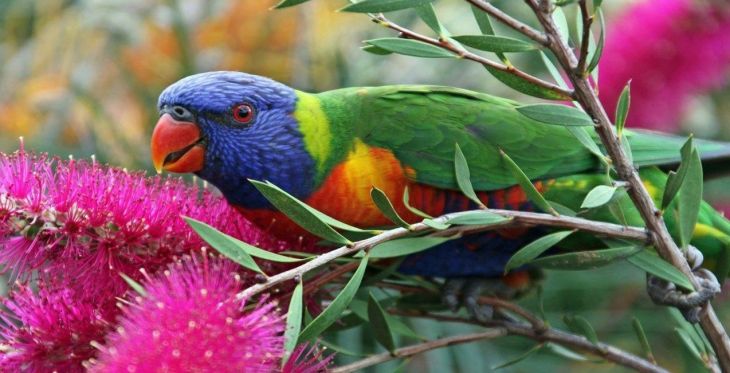
Professor Simon Ho (seated) with Dr Jacqueline Nguyen at the Australian Museum. Photo: James Alcock
In a world first, a team of international scientists including three Australians, Al-Aabid Chowdhury and Professor Simon Ho from University of Sydney, and Dr Jacqueline Nguyen from Australian Museum and Flinders University, have determined the family tree of modern birds and pinpointed the timing of their evolution.
Their findings have been published today in Nature.
The largest study ever undertaken of modern bird genomes, the scientists combined genomic data of more than 360 bird species with data from nearly 200 bird fossils to reconstruct the most well-supported Tree of Life for modern birds.
The research revealed that most modern bird groups appeared within a very small evolutionary window of only five million years. These findings support the hypothesis that birds made the most of opportunities after an asteroid struck earth 66 million years ago wiping out the dinosaurs.
The comprehensive study was led by Assistant Professor Josefin Stiller from the University of Copenhagen, along with Associate Professor Siavash Mirarab from the University of California, San Diego and Professor Guojie Zhang from Zhejiang University.
“Our study has resolved some previous disputes about the bird family tree and added new nuance to the textbook knowledge of bird evolution,” Assistant Professor Stiller said.
Earlier studies had already established that the 10,000 species of living birds form three major groups. About 500 species belong to the flightless ratites group or the landfowl-waterfowl group, however all other birds form a third large and diverse group called Neoaves.
The latest study has been able to establish deeper understanding of relationships in the Neoaves group, which itself contains 10 major sub-groups of birds. These include the colourfully named ‘Magnificent Seven’, including cuckoos, doves, and flamingos, along with three ‘orphan’ groups of birds whose ancestry has long been uncertain.
Professor Ho, who specialises in evolutionary biology at the University of Sydney, said the research has worked out the evolutionary relationships of the major bird groups.
“With such a huge amount of genome data, our study has been able to provide the clearest picture of the bird family tree so far, particularly among the ‘Magnificent Seven’ and three ‘orphan’ bird groups, which make up 95 percent of bird species,” Professor Ho said.







